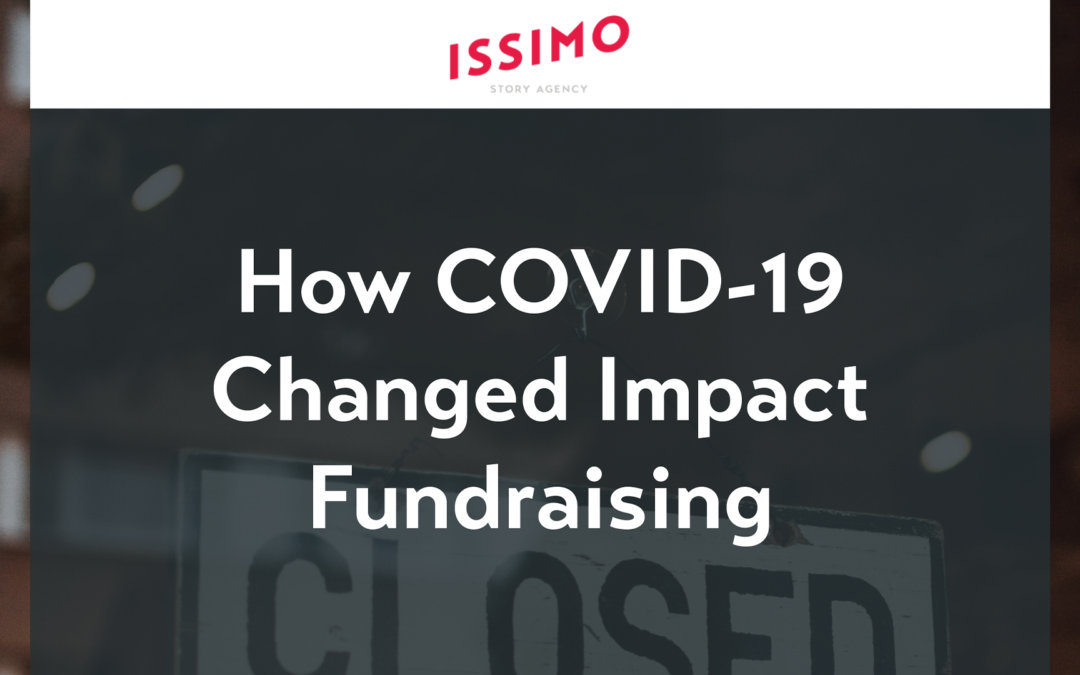COVID-19’s Fundraising Impact
The COVID-19 pandemic and its economic impact greatly affected mission-driven organizations. And we found some surprising results due to the pandemic in our attitudinal research study, which looked at peer-based best practices in impact fundraising, in addition to significant differences in how mission-driven organizations will perform in the future.
We found that one of the main factors of successful fundraising was having flexibility in your approach, which was made even more evident as people adapted to the pandemic.
COVID-19’s Impact on Fundraising Results
Three distinct segments emerged from the data: Confident, Aspiring and Struggling respondents. And between all three segments, 82 percent said the pandemic has negatively affected their fundraising activities.
This shouldn’t come as a surprise, but many respondents said the pandemic impacted many aspects of their fundraising efforts. 48 percent said getting access to investors was more difficult since the pandemic, and 49 percent said it took more time to raise funds. 44 percent said the pandemic negatively impacted the amount of money they could raise.
But there was a silver lining as respondents said there were some positive things to come out of COVID-19. 28 percent indicated they were able to raise more money during the pandemic. 34 percent said their messaging to investors was more impactful during COVID-19.
It was also eye-opening to see that a sizable amount of respondents said COVID-19 didn’t have an impact. Nearly 40 percent said it didn’t affect their access to investors or timelines, 28 percent said it didn’t affect the amount of money they were able to raise, and 45 percent said it didn’t affect their messaging’s effectiveness to investors. Here are some additional findings about the funds respondents raised in 2020:
- 44 percent said the amount they raised was between 25 percent higher to 25 percent lower than previous years
- One-third said they were lower by more than 25 percent
- One-quarter said they were higher by more than 25 percent
While the pandemic affected all of us, it did so in very different ways. Depending on the organization’s cause, industry and mission, some saw record results while others struggled. But unlike in the past, the reasons for this had far more to do with factors out of the organization’s control.
One research participant said, “Our mission hit close to home for our donors during the pandemic. It was a successful fundraising year for my organization.” While another cited, “The pandemic has exacerbated and illuminated the racial, gender and social inequalities we are investing to address. We have focused our communications on both the heightened hazard to investors and the elevated opportunity.”
Predictions for the Future
Has COVID-19’s fundraising impact changed things forever? 55 percent of respondents say they expect it to be somewhat different.
Aspiring and Struggling respondents are significantly more likely to say they expect their approach to be very different (26 percent and 24 percent, respectively) compared to only 4 percent of Confident respondents. In fact, 30 percent of Confident respondents predict their fundraising activities will eventually be the same as before the pandemic.
Despite some of these setbacks during COVID-19, many people are optimistic. 34 percent of all respondents said their messaging to investors actually improved. This may be because they had to adapt and innovate in uncertain times while leaning into what they could control—their messaging. As interactions with investors continue to happen virtually, there may be a decrease in connection and trust than with in-person interactions. Improving your messaging is one thing you can, and should, do to combat this.
One respondent said it best, “COVID-19 has motivated our organization to make changes in the business model. We anticipate that fundraising activities will take many different formats and will be more strategically carried out. It will be stronger than ever.”
To learn more about each segments’ behaviors and the opportunities they present, check out our entire executive summary. And to explore the data yourself, check it out here.

